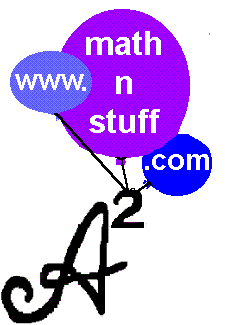- Complete Description of Proposed Session
-
- The audience will use manipulatives to graph f(x), parent functions.
The audience will given f(x), consider:
- f(x) + k,
- f(x - h),
- -f(x),
- f(-x),
- f(x - h) + k,
- f(y),
- 1/f(x), and
- f-1(x).
- Describe a function.
- Compare input to output.
- Compare two functions.
- Generalize about a
family of expressions.
- Solve traditional and nontraditional equations
and systems (as a end in itself and as a precursor to calculator or computer solution).
- Examine functions of the form y = a(x)f(x), power, rational, and
envelope functions.
- Consider the implications and
manipulative/concrete
presentation techniques.
- Introduction
- Manipulatives for Function Exploration:
Slopemeter, Isolator, Absolute Value Dilator
- The Possibilities with Concrete Thought
-
- A Closer Look at Functions
- Speaking, Hearing, and Writing about Functions and their Graphs
- Visualizing Functions and Graphs
- The Slope
-- of Curves,
-- of a Curve at a Point - Reflections on Y = X
- Inversely So: Finding the Potential Inverse Functions
- Considering the Slope of Inverse Functions
- Solving Systems
-
- Families of Functions: Translations, Reflections
- Parent Functions:
x, -x, 1/x,
 x, x2, x, x2,
|x|, exp(x), ln(x), sin(x), cos(x), tan(x),
- Early Examples of the Addition of Functions: y = f(x) + k
- Early Examples of the Product of Functions: y = af(x)
- Early Examples of the Composition of Functions: y = g(f(x))
- More on the Composition of Functions: y = g(f(x))
-
- Summation
- Math Exercises
- Food for Thought:Dilation
Why does a cubic look like a cubic?
Why does the tangent function behave the way it does?
The Unit Circle Manipulatively
Why does a rational function look have the properties it has?
Dilation by a Constant Functions: y = af(x)
More on the Addition of Functions: y = f(x) + g(x)
More on the Product of Functions: y = a(x)f(x)
- Rules of Manipulative Use
- Strategies for Change
|

